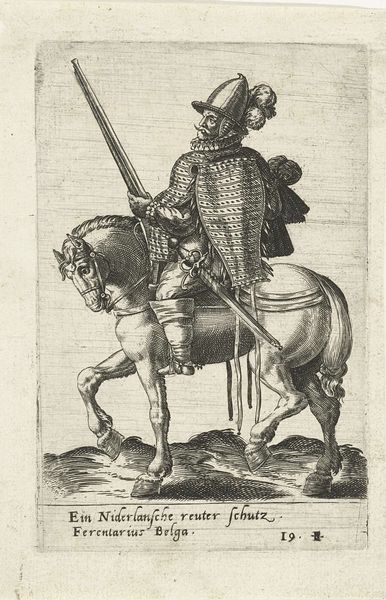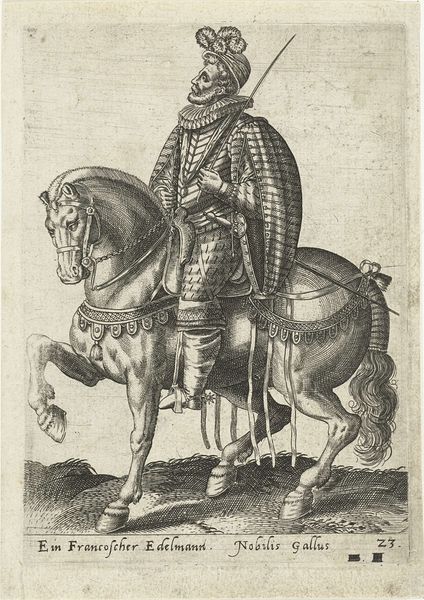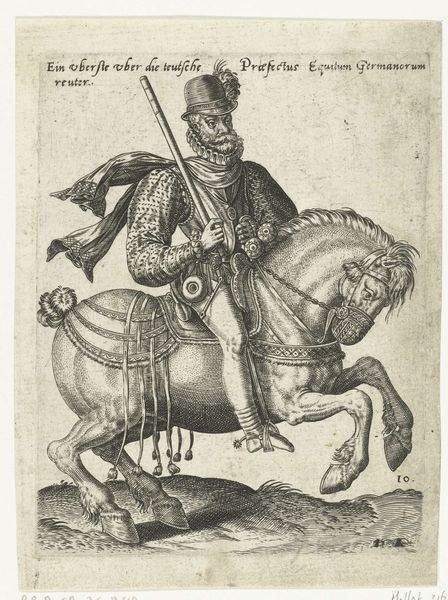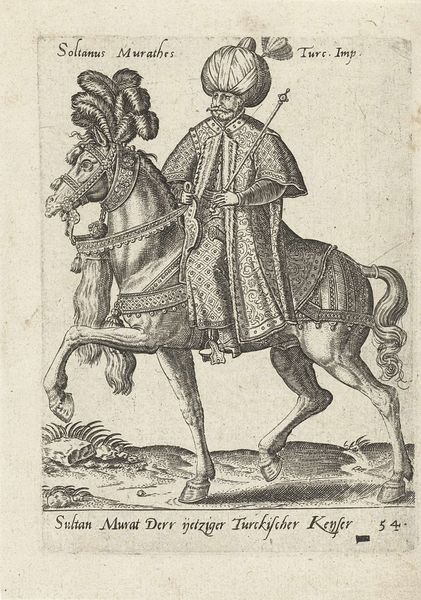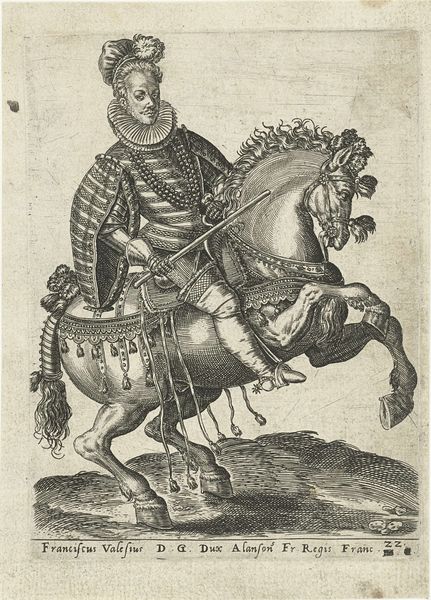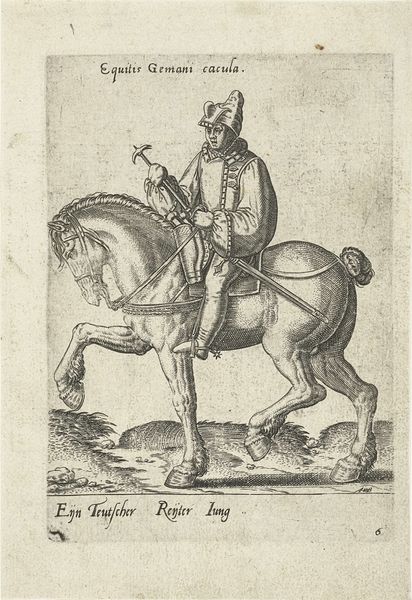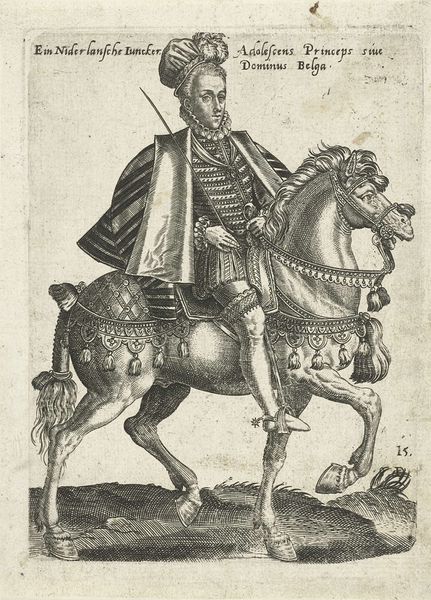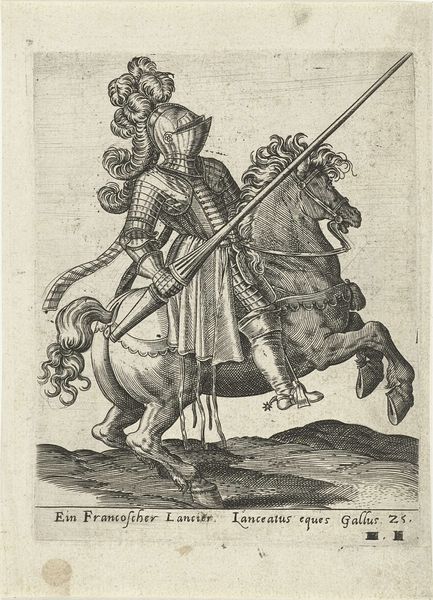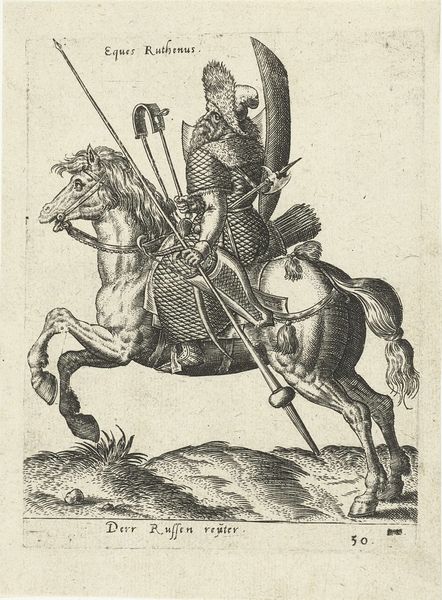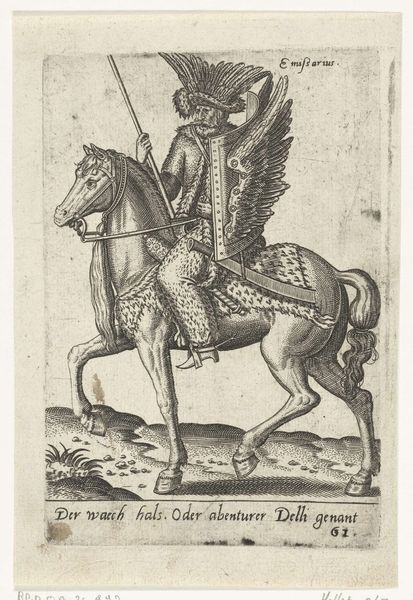
#
light pencil work
#
quirky sketch
#
pencil sketch
#
sketch book
#
personal sketchbook
#
sketchwork
#
pen-ink sketch
#
sketchbook drawing
#
storyboard and sketchbook work
#
sketchbook art
Dimensions: height 150 mm, width 112 mm
Copyright: Rijks Museum: Open Domain
Curator: Here we have Abraham de Bruyn’s "Italian Lancer," dating back to 1577. Editor: There's a crisp confidence in those lines, isn't there? It feels so meticulously rendered yet somehow...aloof. Curator: Aloof, yes, perhaps. It certainly speaks to a very specific iconography of power. Look at the detailed armour, the posture of the horse, every element underscores authority. This piece resides at the Rijksmuseum and allows us to delve into the cultural memory of status. Editor: Absolutely. Consider the social stratification implicit in portraying such an individual. Who had the means to commission or create such a portrait, and what statement were they intending to make? It reads as both aspirational and a bit cautionary, especially in its period. The Italian Lancer becomes almost an emblem of military dominance. Curator: Precisely! The symbol of the lance itself, brandished confidently, extends that notion. The plumed helmet adds another layer too. A signifier, undoubtedly, but is it purely performative? Does it hint at something beyond the brute power of soldiery? I find it really draws attention. Editor: Or is it there to mask it? Maybe the opulence veils the human cost. It provokes interesting questions around conflict and national identity, doesn't it? Curator: It really does. There's so much to unpack in this relatively simple sketchbook drawing. The artist makes striking visual choices that reverberate through history. Editor: Indeed, a piece of historical record that still spurs contemporary discussions. Thank you! Curator: My pleasure, I too am taking away new insights.
Comments
No comments
Be the first to comment and join the conversation on the ultimate creative platform.
